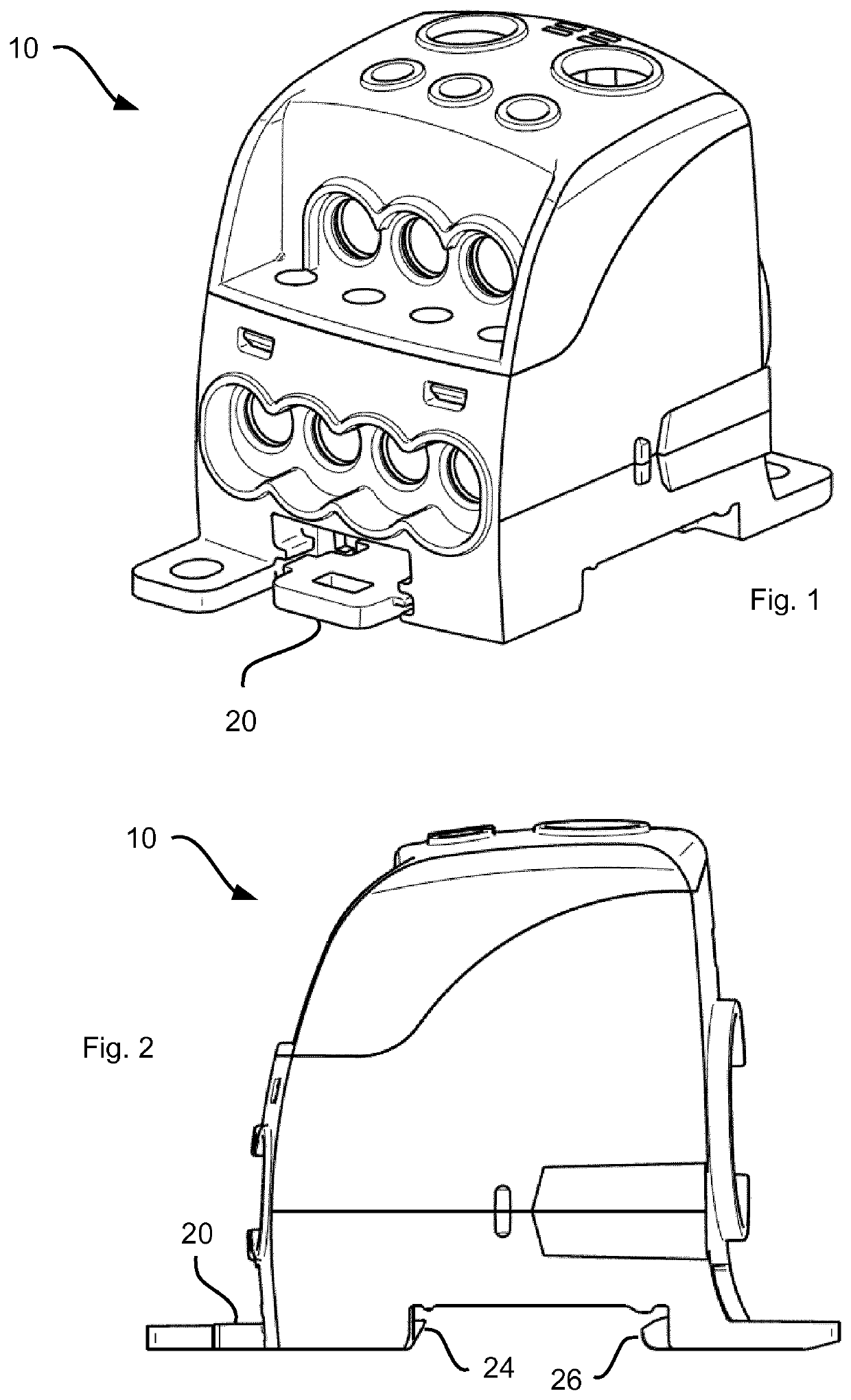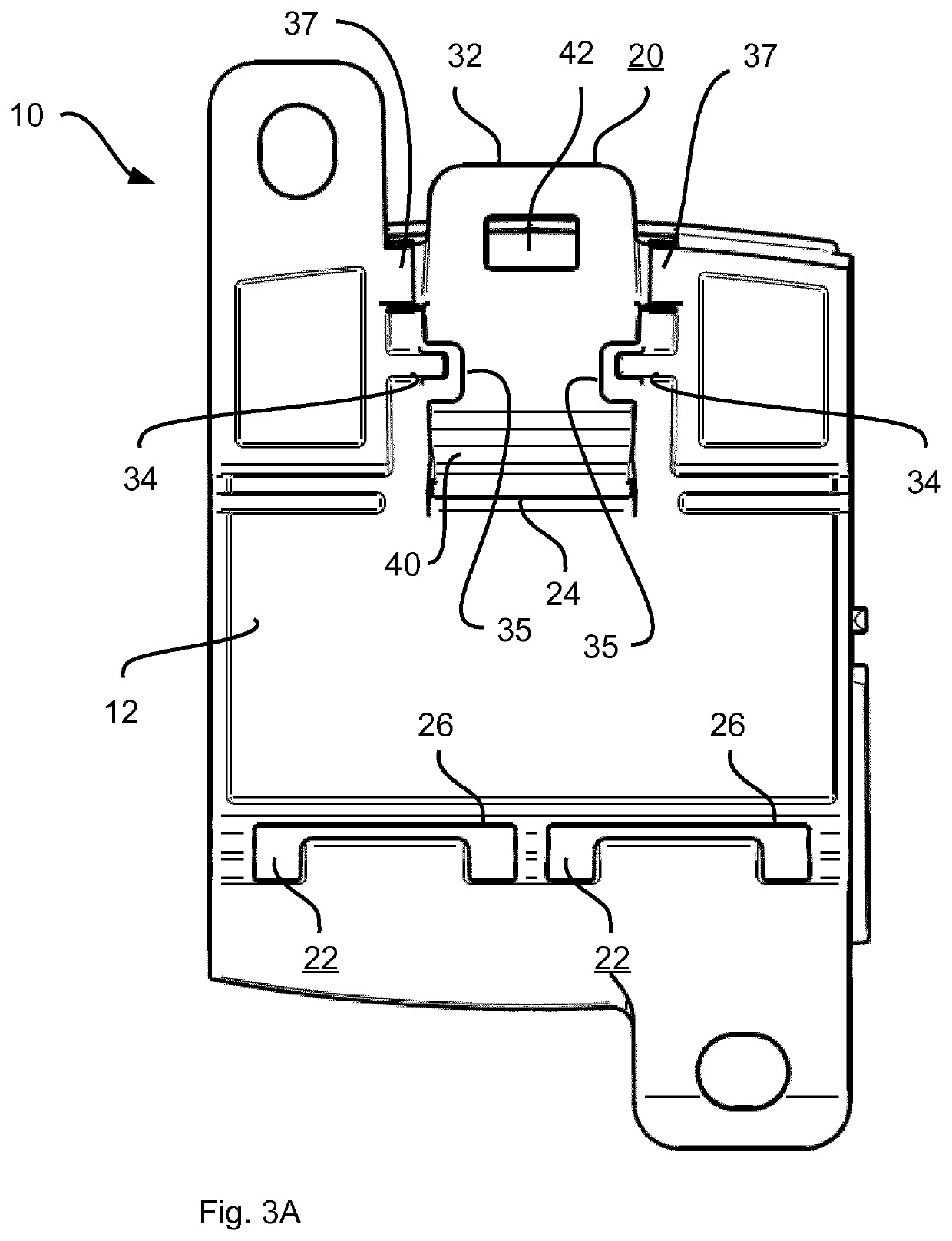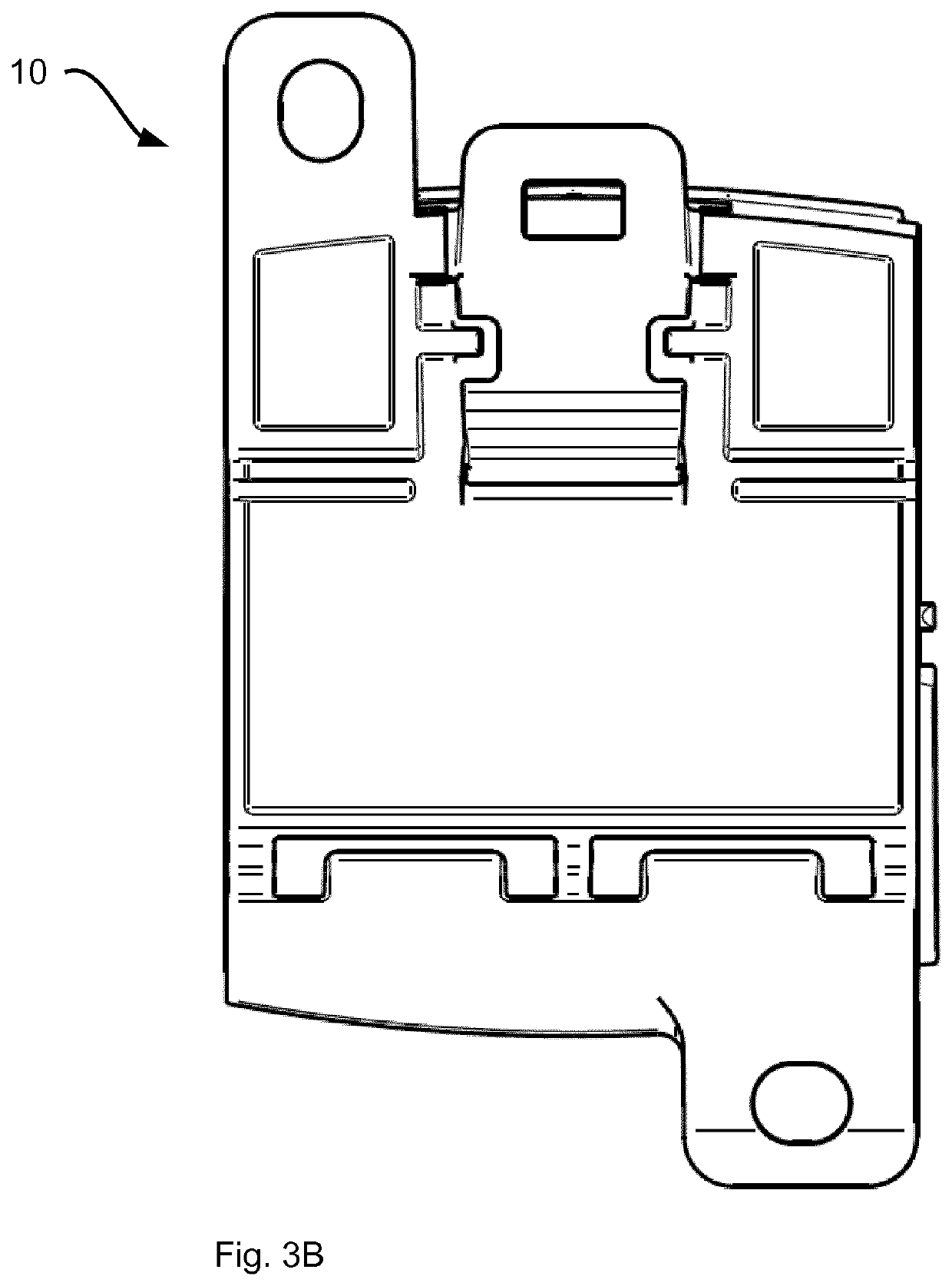Locking mechanism for an electrical assembly, and assembly comprising a locking mechanism
a technology of locking mechanism and electrical assembly, which is applied in the direction of electrical apparatus, basic electric elements, connections, etc., can solve the problems of reduced elastic property and achieve the effect of convenient access and simplified operation of the locking mechanism
- Summary
- Abstract
- Description
- Claims
- Application Information
AI Technical Summary
Benefits of technology
Problems solved by technology
Method used
Image
Examples
Embodiment Construction
The illustrations in FIG. 1 and FIG. 2 show, as an example of an electrical assembly 10 of the type under discussion here, a distribution block / a distribution terminal similar to the distribution terminal described in DE 20 2010 005 216 U1. The illustrations in FIGS. 3A, 4A, and 5A correspond to the illustrations in FIGS. 3B, 4B, and 5B, with the reference lines and reference numerals omitted in the illustrations in FIGS. 3B, 4B, and 5B for better clarity.
The illustrations in FIGS. 3A, 3B show a bottom side 12 of the assembly 10 according to FIG. 1 and FIG. 2. The assembly 10 is provided for snapping onto a support rail 14 (FIG. 6). For this purpose, the bottom side 12 of the assembly 10 has a corresponding design, and has a detent mechanism in the form of at least one movable detent hook 20 and at least one rigid detent hook 22. The movable detent hook 20 and the, or each, rigid detent hook 22 are oppositely placed, facing one another, on the bottom side 12 of the assembly 10. A di...
PUM
 Login to View More
Login to View More Abstract
Description
Claims
Application Information
 Login to View More
Login to View More - R&D
- Intellectual Property
- Life Sciences
- Materials
- Tech Scout
- Unparalleled Data Quality
- Higher Quality Content
- 60% Fewer Hallucinations
Browse by: Latest US Patents, China's latest patents, Technical Efficacy Thesaurus, Application Domain, Technology Topic, Popular Technical Reports.
© 2025 PatSnap. All rights reserved.Legal|Privacy policy|Modern Slavery Act Transparency Statement|Sitemap|About US| Contact US: help@patsnap.com



